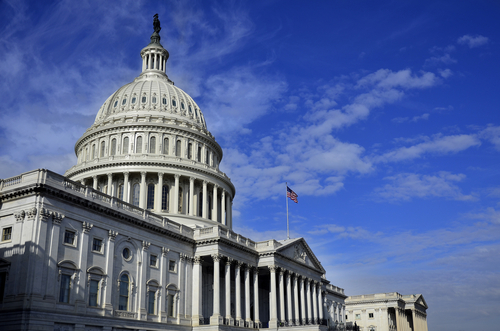For those looking for an official analysis and explanation of the SECURE 2.0 Act of 2022, Congress’ Joint Committee on Taxation (JCT) has just posted a helpful resource.
 Prepared by the staff of the Joint Committee on Taxation in consultation with the staffs of the House Committee on Ways and Means and the Senate Committee on Finance, the “Bluebook” (known formally as the General Explanation of Tax Legislation Enacted in the 117th Congress) provides explanations of over 170 tax provisions, across eight different Acts, starting with the American Rescue Plan Act of 2021 and ending with the Consolidated Appropriations Act, 2023.
Prepared by the staff of the Joint Committee on Taxation in consultation with the staffs of the House Committee on Ways and Means and the Senate Committee on Finance, the “Bluebook” (known formally as the General Explanation of Tax Legislation Enacted in the 117th Congress) provides explanations of over 170 tax provisions, across eight different Acts, starting with the American Rescue Plan Act of 2021 and ending with the Consolidated Appropriations Act, 2023.
For each provision, the Bluebook includes a description of present law, an explanation of the provision and the effective date. For a bill with a committee report (or, in the absence of one, a contemporaneous technical explanation prepared by the Joint Committee staff), the document is based on the language of the report or explanation. In addition, an appendix provides a table with the estimated budget effects of the tax legislation.
As most NAPA readers will likely recall, the SECURE 2.0 Act, which builds on the foundation laid by the 2019 SECURE Act, was included in Division T of the Consolidated Appropriations Act, and was signed into law by President Biden on Dec. 29, 2022.
Among the roughly 90 provisions contained in SECURE 2.0 include the establishment of a new “Starter K,” supported by the ARA to allow employers that do not currently sponsor a retirement plan to offer a starter 401(k) plan (or safe harbor 403(b) plan); a 100% tax credit for new plans; and an enhanced Saver’s match.
While SECURE 2.0 contained the vast majority of the retirement-based tax policy changes enacted during the 117th Congress, it wasn’t the only legislation that included such changes.
The American Rescue Plan enacted in March 2021 established a Special Financial Assistance Program for financially troubled multiemployer plans. The legislation also provided single-employer plan funding relief, as well as modified the special rules for minimum funding standards for community newspaper plans.
Similarly, the Infrastructure Investment and Jobs Act enacted in November 2021 included new reporting requirements for digital assets, additional pension smoothing relief and clarified disaster relief assistance.
And while the $740 billion Inflation Reduction Act had originally sought to impose limits on higher-income individuals with large retirement account balances, the final legislation did not contain those provisions, targeting corporate taxes instead, including a 15% minimum corporate tax and a 1% excise tax on stock buybacks.
JCT’s Bluebook follows the chronological order of the tax legislation as signed into law.
- Part One: Explanation of the revenue provisions of the American Rescue Plan Act of 2021 (Pub. L. No. 117–2).
- Part Two: Explanation of Section 201 of the Surface Transportation Extension Act of 2021 (Pub. L. No. 117–44).
- Part Three: Explanation of Section 4 of the Further Surface Transportation Extension Act of 2021 (Pub. L. No. 117–52).
- Part Four: Explanation of Division H of the Infrastructure Investment and Jobs Act (Pub. L. No. 117–58).
- Part Five: Explanation of Section 307 of Division P of the Consolidated Appropriations Act, 2022 (Pub. L. No. 117–103).
- Part Six: Explanation of Section 103 of the CHIPS Act of 2022 (Pub. L. No. 117–167).
- Part Seven: Explanation of the revenue provisions of an Act to provide for reconciliation pursuant to Title II of S. Con. Res. 14 (Pub. L. No. 117–169), better known as the Inflation Reduction Act.
- Part Eight: Explanation of Division T (the SECURE 2.0 Act) and Section 4151 of the Consolidated Appropriations Act, 2023 (Pub. L. No. 117–328).
A copy of the Bluebook can be downloaded from the Joint Committee on Taxation’s website.

